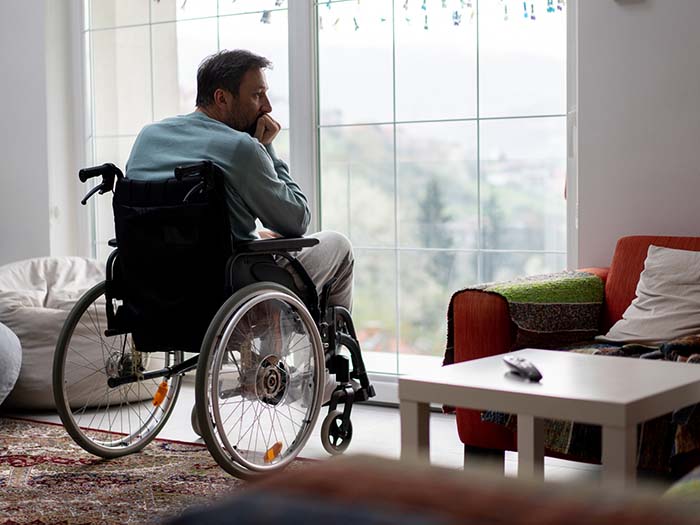WC Cost Trends
Increase Seen in Questionable Drug Screens

Research results to be published later this year will document growing incidences of giving workers’ compensation claimants urine drug tests even when doctors have not prescribed opioid pain medications.
Medical treatment guidelines call for doctors to use urine drug screen testing to determine whether patients they have prescribed addictive opioids to engage in aberrant behavior, such as doctor shopping for multiple prescriptions or selling the drugs rather than consuming them as prescribed.
But new California Workers’ Compensation Institute research results document a growth in cases of injured workers given drug tests even though a doctor has not prescribed opioid pain killers, said CWCI President Alex Swedlow.
“We see people getting tested to a greater and greater extent and more injured workers getting tested regardless of whether or not they have an opioid prescription,” Alex Swedlow, California Workers’ Compensation Institute president
Swedlow plans to publish the new findings in advance of CWCI’s upcoming annual meeting.
Questions about the overuse of drug screens as unnecessary workers’ comp cost drivers are not new, having surfaced nearly three years ago. But the new CWCI research is based on recent claims data and shows “continued significant increases” in drug testing with questionable application, Swedlow said.
“We are seeing continued, significant increases in the percentage of drug tests relative to all lab tests, the average number of tests per claim, as well as the percentage of the injured workers who are receiving drug tests without a corresponding schedule II or III opioid prescription,” Swedlow said. “We see people getting tested to a greater and greater extent and more injured workers getting tested regardless of whether or not they have an opioid prescription.”
Swedlow believes the practice has become “a real revenue center.” His new research will update CWCI’s past findings on opioid-related drug screening.
While CWCI’s research is based on California claims data, observers expect that similar practices occur in other jurisdictions.
Across the nation, geographic pockets exist where drug-testing overutilization occurs and other regions where underutilization occurs, said Michael Gavin, president of PRIUM, a workers’ comp cost containment company owned Ameritox, a pain medication monitoring entity.
Gavin pointed to a Workers Compensation Research Institute study released last year reporting that sizable increases in drug testing occurred across some states while the percentage of longer-term opioid users receiving testing services remained low in other states.
Organizations such as the American College of Occupational and Environmental Medicine (ACOEM) and various state agencies developed medical treatment guidelines that include the recommended drug screening.
Their work followed an alarming epidemic of patients overdosing or becoming dependent or addicted to the medications.
The following increase in drug screening came with criticisms that the overuse of the testing drives unnecessary expenses for workers’ comp payers.
No Evidence of Drop in Pain Meds
CWCI reported in 2012 that drug testing was becoming a significant workers’ comp cost driver. It estimated that for 2011, California insurers and self-insured employers spent $98 million for the drug tests.
CWCI’s study found that the volume of drug testing rose 4,537 percent from 2004 to 2011, increasing from 4,012 tests to 186,023. The average amount paid per test, meanwhile, rose from $81 to $207.
Observers in other states similarly complained of a sudden spike in bills for drug-testing while raising concerns that the tests were often administered in cases where they were not necessary.
Even though research such as CWCI’s work shows the drug screening of injured workers has skyrocketed, he has yet to observe a corresponding drop, to the extent he would expect, in the prescribing of the narcotic pain medications, said Brian Carpenter, senior VP, product development and clinical programs for pharmacy benefit manager Healthcare Solutions Inc.
Drug tests uncovering claimant’s aberrant behavior have resulted in doctors halting opioid prescriptions and notifying workers’ comp payers who have closed such claims, Carpenter said.
Logically, though, he would expect a greater decrease in the number of opioid medications prescribed by doctors because workers’ comp payers are footing the bill for more and more of the drug tests.
“Drug screening creates some mitigation,” Carpenter said. “I am not saying that it doesn’t. But you are not seeing what you would expect to see with those kinds of increases in uses of those tests. You are not seeing the decreased use in opioids as we should see with increased urine drug screens.”
You would expect to see some decrease in opioid prescribing accompany the urine tests, although not in an exact proportion to the amount of testing, said Kathryn L. Mueller M.D., a medical professor at the University of Colorado in Denver.
Not all drug screen test results pointing to patient abnormal behavior lead to a doctor discontinuing a pain medication prescription, added Mueller, who is also ACOEM president and medical director for Colorado’s Division of Workers’ Compensation.
Drug testing is “the medical standard of care so there shouldn’t be a question of whether it has to be done,” Mueller said.
She knows of plenty of cases where Colorado doctors have immediately stopped prescribing opioids due to test results, Mueller said.
“Part of what you have to understand is we are not doing it for the money, we are doing it for the patient care,” Mueller added.
Testing protects both patients and doctors by preventing overdoses, deaths, the illegal sale of prescribed drugs and other problems, Mueller added.
Yet the overuse of tests does occur, driving claims’ payer expenses, Mueller said. About 10 percent to 20 percent of patients show a need for a “shift in therapy,” away from being prescribed opioids, Mueller continued.
That means drug screen testing can’t possibly be useful every time a script for opioids is written, especially when the majority of patients are not misusing the drugs or are not likely to do so in the future.
But sufficient scientific evidence on how often testing should occur is lacking, so more studies are in order, Mueller said.
“That is something that should be looked into,” she said.
Care should be taken in making blanket statements regarding the use of drug screening in cases where opioids are not prescribed, Gavin added. Doctors could be evaluating patients for many other prescribed drugs which can also be dangerous if used improperly.
Still, adjusters and medical personnel alike may not be acting on drug test results showing a patient’s questionable behavior, Gavin said. Greater education is needed to improve their responses.
“There are a number of inconsistent urine drug screens that should lead to medical change, but do not because the medical community is under-prepared to use the tool that has been placed at their disposal,” he said.










